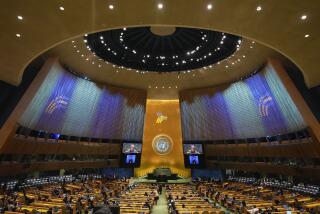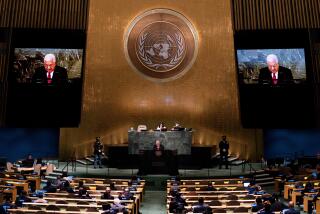Best of a bad U.N. deal
- Share via
ONE OF THE GREAT DISAPPOINTMENTS about the United Nations has been its inability to effectively monitor compliance with its human rights treaties. Its discredited Human Rights Commission is ineffective and has counted such leading human rights violators as Libya and Sudan among its members.
Secretary-General Kofi Annan, with U.S. backing, has been pressing for changes to the U.N.’s approach to international human rights abuses for nearly a year. Annan’s original proposal called for a new human rights council whose members would be elected by a two-thirds vote of the General Assembly, making it more difficult for countries with poor human rights records to make the cut. It would meet several times a year, rather than only once as the current commission does, and it would have fewer members so it could react more quickly to crises.
Alas, Annan didn’t get all that he wanted. After intensive negotiations, General Assembly President Jan Eliasson came back last month with a draft resolution calling for a council elected by a majority vote, which would have 47 members (fewer than the current 53 but far more than the 30 that the U.S. wanted) and would meet at various times during the year. Annan, the European Union and respected human rights organizations are supporting this compromise as an improvement to the status quo and the best they are likely to get.
The United States alone, reflecting Ambassador John Bolton’s scorched-earth approach to all U.N. reform issues, is allowing the perfect to be the enemy of the good, holding out for Annan’s initial proposal. But Washington should drop its opposition to the proposed compromise because the real alternative is not a more ambitious overhaul but no change. And if that were to happen, the U.S. would have sided with human rights violators that don’t care for a more effective human rights enforcer.
More to Read
Sign up for Essential California
The most important California stories and recommendations in your inbox every morning.
You may occasionally receive promotional content from the Los Angeles Times.












